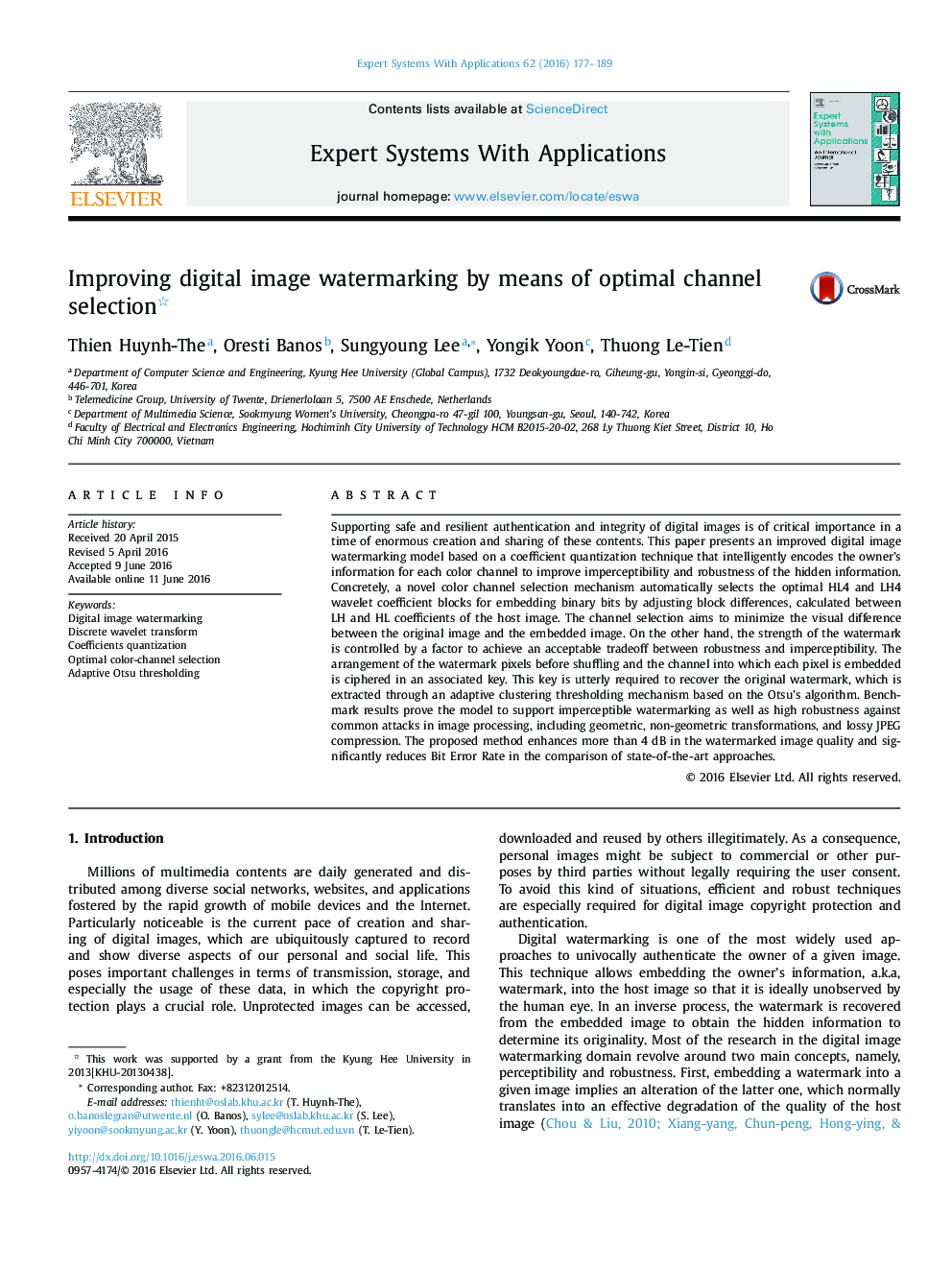| Article ID | Journal | Published Year | Pages | File Type |
|---|---|---|---|---|
| 383549 | Expert Systems with Applications | 2016 | 13 Pages |
•Novel digital image watermarking method using a wavelet-based quantization approach.•Optimal color channel selection scheme for the embedding.•Otsu’s classification-based adaptive threshold for the extraction process.•Outperformance of imperceptibility and robustness to state-of-the-art techniques.
Supporting safe and resilient authentication and integrity of digital images is of critical importance in a time of enormous creation and sharing of these contents. This paper presents an improved digital image watermarking model based on a coefficient quantization technique that intelligently encodes the owner’s information for each color channel to improve imperceptibility and robustness of the hidden information. Concretely, a novel color channel selection mechanism automatically selects the optimal HL4 and LH4 wavelet coefficient blocks for embedding binary bits by adjusting block differences, calculated between LH and HL coefficients of the host image. The channel selection aims to minimize the visual difference between the original image and the embedded image. On the other hand, the strength of the watermark is controlled by a factor to achieve an acceptable tradeoff between robustness and imperceptibility. The arrangement of the watermark pixels before shuffling and the channel into which each pixel is embedded is ciphered in an associated key. This key is utterly required to recover the original watermark, which is extracted through an adaptive clustering thresholding mechanism based on the Otsu’s algorithm. Benchmark results prove the model to support imperceptible watermarking as well as high robustness against common attacks in image processing, including geometric, non-geometric transformations, and lossy JPEG compression. The proposed method enhances more than 4 dB in the watermarked image quality and significantly reduces Bit Error Rate in the comparison of state-of-the-art approaches.
